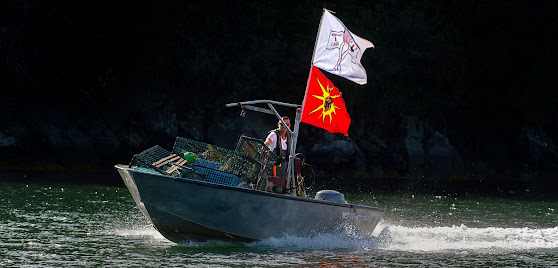Early Monday morning, flames engulfed a fishing boat belonging to a Mi’kmaw fisherman from the Sipekne’katik First Nation at a southwestern Nova Scotia wharf. The suspicious fire is the latest in a weeks-long saga of conflict between Indigenous lobster fishers and non-Indigenous commercial fishers.
Beginning on September 17, the day the Sipekne’katik nation launched its self-regulated lobster fishery, a multi-day standoff between Indigenous and non-Indigenous fishers led to violence on wharves in Saulnierville and Weymouth, Nova Scotia. The RCMP charged two men with assault. On the water, commercial fishers fired flares at Sipekne’katik fishers, blockaded their vessels, and removed hundreds of traps from St. Marys Bay, Nova Scotia, home to some of the most lucrative lobster fishing in Atlantic Canada. There is worry the unrest will flare up again when commercial lobster season opens, and Indigenous and non-Indigenous fishers are on the water at the same time.
Around Nova Scotia, the opening of the lobster fishing season is staggered throughout the year. But in this part of the province, St. Marys Bay, which is part of Lobster Fishing Area 34, commercial lobster season, as designated by Fisheries and Oceans Canada (DFO), runs from November 30 to May 31.
The commercial fishers claim the protests are to protect the lobster population, insisting that catching lobsters out of season threatens this valuable resource.
But does it? (more...)
Mi’kmaw Fishery Dispute Is Not About Conservation, Scientists Say
Related:
RCMP Systemic Racism Class Action Lawsuit Alleges Discrimination Against Indigenous People

No comments:
Post a Comment